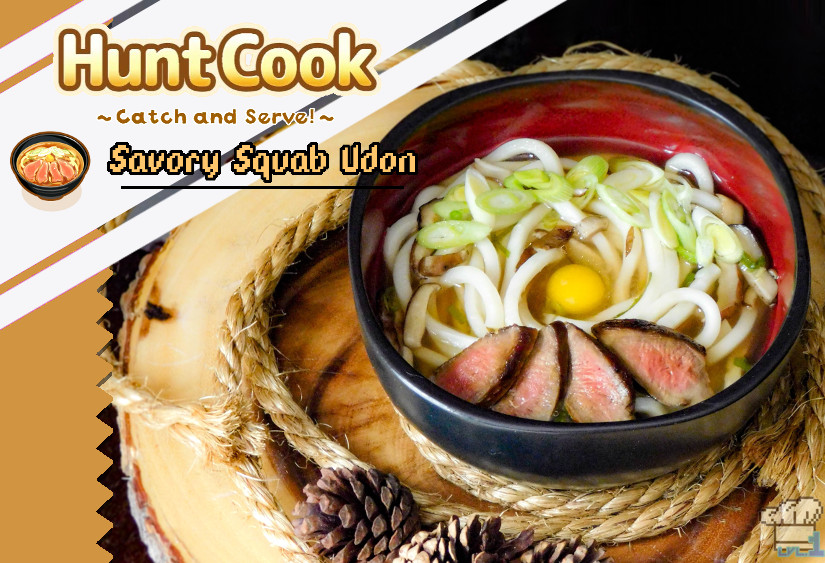As much as I love video games, I can’t say I’m much for cell phone games. I guess I’m a sucker for a controller, but apart from Pokemon GO and maybe Monument Valley (which is amazing btw) nothing really jumps out at me. That is, until one of my friends on Twitter started posting screenshots of the game on which this week’s recipe is based, Hunt Cook: Catch and Serve.
This game was right up my alley! Tons of cooking, cute art style, and tough gameplay (at the higher levels) made for a fun little diversion when I grabbed this game last month. Oh and it’s free, so that’s another thing right up my alley.

The premise of the game is that you (human) have been hired to work at the Hunt Cook Restaurant by ‘The Boss’ (a shiba inu wearing a chef’s hat) in order to drum up popularity and expand the menu. You accomplish this by hunting all manner of game animals and fish, catching them, and then cooking dishes with the resulting meat. There are several other vegetable and plant related ingredients that you pick up along the way so before you know it you have quite the pantry to choose from!
Guests will visit your restaurant and ask for specific meals which you sell for money and experience that can be used to buy new hunting equipment or new recipes. Once you reach a certain level, a new hunting area opens up and new game along with it. This mechanic of constantly unlocking new things is definitely enough to keep someone like me interested even though the constant adds for Final Fantasy became irritating at times.

I knew I wanted to try making some recipes from this game as soon as I started playing. The problem was, that a lot of the meat in the game is pretty hard to come by unless you’re actually a hunter, which to clarify, I am not. So interesting dishes like Raven Meat Pie and Crocodile Carpaccio were unfortunately out of the question, bummer. Pigeon, also known as squab however, was an animal on the list that I had actually worked with before in culinary school, and remember enjoying. It seemed like a good compromise of being a unique ingredient, but not as impossible to find as say, grizzly bear meat, so I decided to try my hand at the Savory Squab Udon recipe from the game.
Luckily, and as usual, my local Asian market provided everything I needed for this recipe, but I wouldn’t be surprised if a Whole Foods or specialty meat market would have squab as well. That being said, there’s certainly no problem with substituting in chicken (probably Cornish game hen) or duck meat for this recipe if you can’t track down any; I’m just a stickler for accuracy. Honestly, you’d probably be better off substituting the poultry in the end because really, there’s not that much meat on a pigeon.
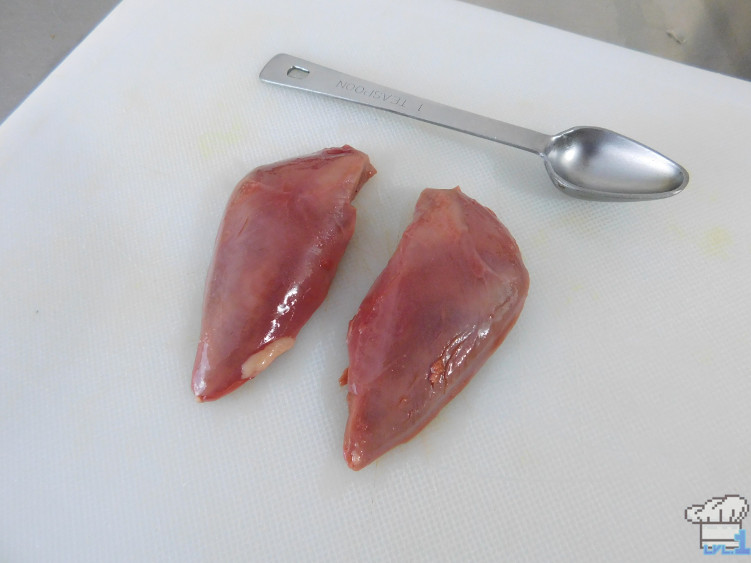
Avians aside, where this recipe really shines is in the soup broth. It has an extremely pronounced umami flavor thanks to the dried bonito flakes and definitely stands up to the marinated squab’s gaminess. We tested two udon recipes on my kitchen stream and found that the lighter, more vegetal broths just didn’t pair as well. The recipe for squab udon in the game was only wheat (the udon noodles themselves,) squab, green onion, and ginger, so this broth covers all the bases!
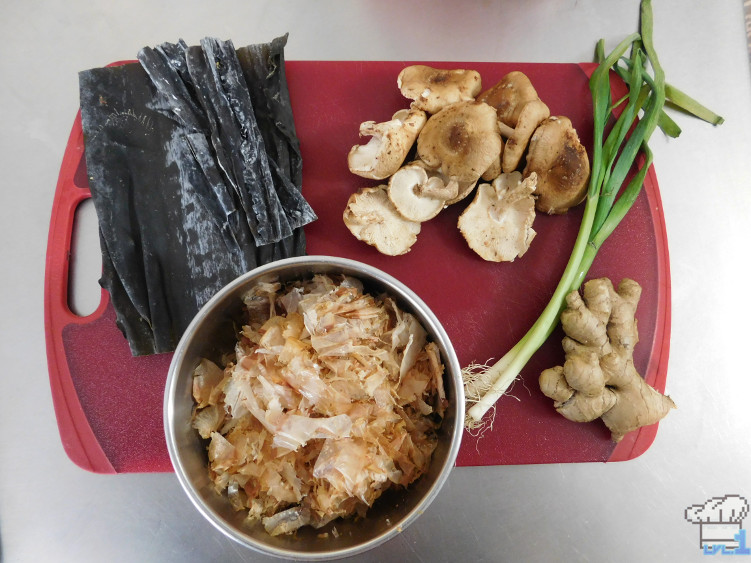
This really is a delicious recipe and is a perfect introduction to Japanese cuisine. I especially like it because along with being very simple, it uses a lot of cool ingredients that most people aren’t familiar with like konbu (dried kelp) and the aforementioned bonito flakes. In order to emulate the in game image, I also added a quail egg to the finished broth. This is fairly common with ‘moon udon’ so I wanted to give it a try in this recipe. Feel free to substitute a chicken egg if you’d like, but never be afraid to try new foods!
Anyway, I hope you have fun with this recipe. Let me know in the comments section if you gave it a try, I’d love to hear what you thought!
Before we get started it’s worth noting that the in-game description of this dish mentions the squab (or whichever poultry you choose) is marinated in ‘Nanban’ sauce. I used one of Makiko Itoh’s recipes found here and marinated the squab breasts overnight before making the udon the next day.
+ Savory Udon Broth +
makes about 5 cups
ITEMS
| Ingredient | Conventional | Metric |
|---|---|---|
| Konbu (dried kelp) | 1 oz | 30 g |
| Shitake Mushrooms | 3 oz | 90 g |
| Green Onion, chopped | 1 | |
| Fresh Ginger, peeled and sliced | ½ oz | 15 g |
| Water | 6 cups | 1.4 L |
| Mirin | 1 cup | 240 mL |
| Sake | 1 cup | 240 mL |
| Bonito | 1 oz | 30 g |
| Soy Sauce | 2 Tbsp | 30 mL |
EQUIP
- Sharp knife and a cutting board
- Large cook pot
- Medium sauce pan
- Cheesecloth
- Strainer
WALKTHROUGH
1) Start the broth by removing the stems of the shitake mushrooms and placing them along with the konbu, sliced ginger, chopped green onion, and six cups of water into a large cook pot and bring to a boil. Reserve the mushroom caps for later on in the recipe. Reduce the heat and simmer the pot for 10 minutes.
2) While the broth is simmering, combine the mirin and sake in a medium sauce pan over medium high heat. Bring to a boil and let it reduce for two minutes as the alcohol is burned off. Warning: alcohol is flammable so there is a chance you could get some flames here especially if you have a gas stove. Make sure to have a pot lid handy in case you need to snuff out any flames. Alternatively, you can reduce the mixture over medium or low heat instead for five minutes.
3) Once the 10 minutes are up, pour in the reduced mirin sake mixture and continue to simmer the pot for five minutes. Next, add the bonito flakes and soy sauce and simmer for a final five minutes. Remove from the heat and let stand for ten minutes.
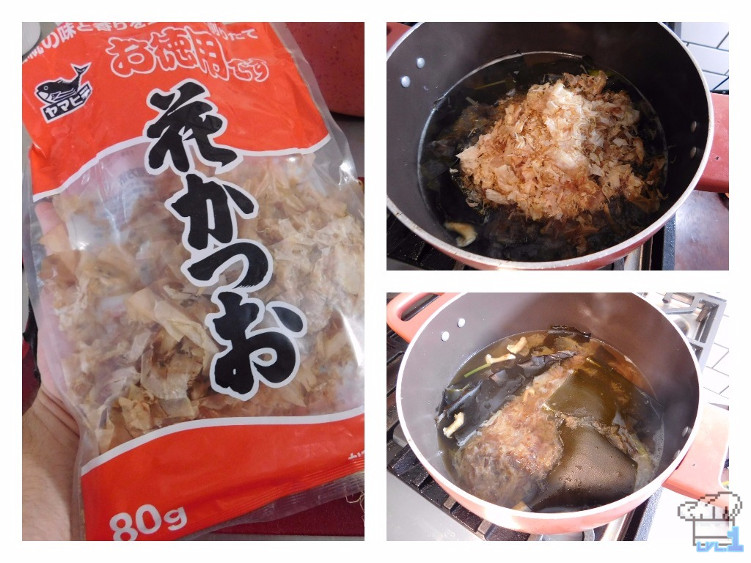
4) To strain the broth, line a colander or strainer with cheesecloth and pour the broth through into a clean container. Cheesecloth is important here as it is able to trap the tiny bonito flakes that can end up making your broth cloudy in the end. If you’re saving it for later, the broth can be covered and kept in the refrigerator at this point, but if you’re powering through, let’s continue on to the next part of the recipe!
+ Savory Udon Soup +
makes about 4 servings
ITEMS
| Ingredient | Conventional | Metric |
|---|---|---|
| Mushroom Caps | 2.5 oz | 70 g |
| Fresh Ginger, minced | 1 tsp | 5 g |
| Green Onion, sliced thin | 1 | |
| Canola Oil | 1 Tbsp | 15 mL |
| Udon Broth | see above | |
| Udon Noodles (not dried) | 1 16 oz bag | 453 g |
| Quail Egg* | 4 | |
| Marinated Squab* | as needed |
EQUIP
- Sharp knife and a cutting board
- Large cook pot
- Medium cook pot
- Medium saute pan
- Rubber spatula
- Tongs
- Soup ladle
WALKTHROUGH
1) Now to make the soup! Thinly slice the mushroom caps from earlier and place them in a large cook pot along with the canola oil over medium heat and cook until tender, about 2 minutes, stirring occasionally. Next, add in the ginger and green onion and cook for another minute. Once everything is softened pour all of the strained Udon broth we made earlier into the pot. Bring the soup to a boil one last time and remove from the heat.
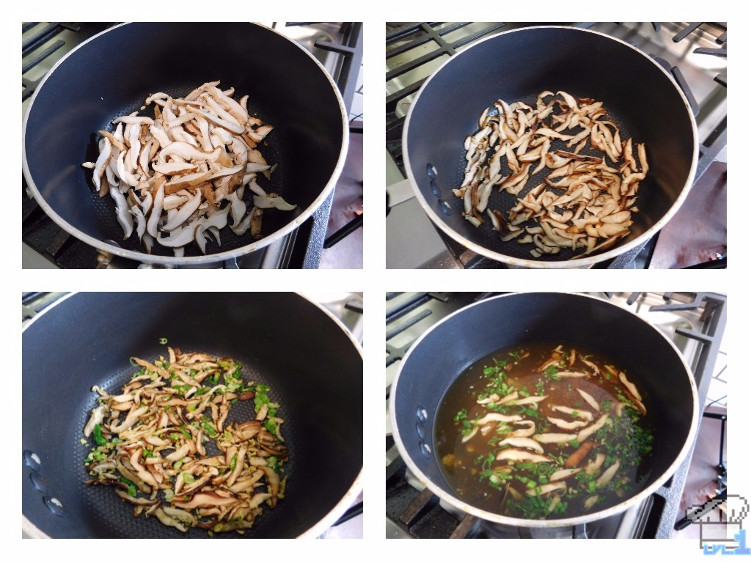
2) To prepare the udon noodles, fill a medium cook pot with water and bring it to a boil with a couple pinches of salt. I used packaged pre-made udon noodles (like this) and all I had to do was place the ‘brick’ into the hot water and gently push it apart with a spatula until they all separated. Drain the excess water out of the pan and use a pair of tongs to divide the noodles between four soup bowls.
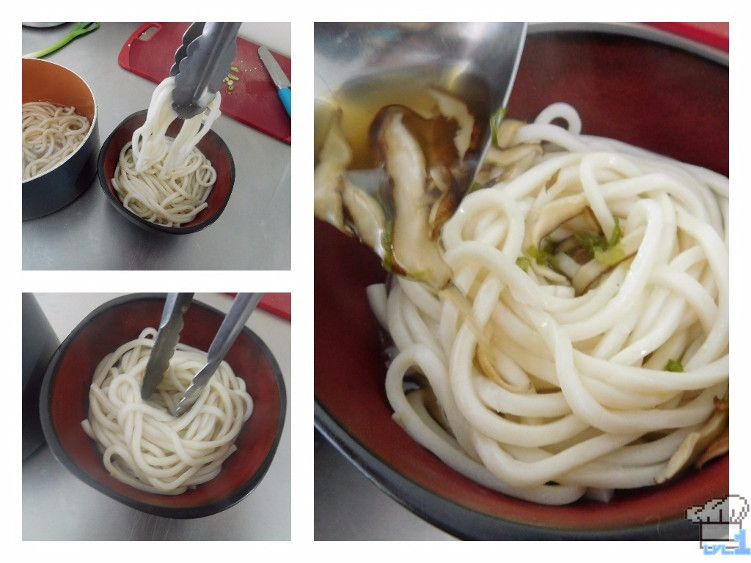
3) Create a little pocket in the center of the noodles for our egg and then ladle a few spoonfuls of the hot soup over top. Crack your quail (or regular) egg very carefully and drop it right in the center of the udon ‘nest.’ Pour another spoonful or two over the egg and then cover the bowl completely for a minute or so to cook the egg. The goal is to cook the yolk to sunny side up consistency so if you’re wary of under-cooked eggs for whatever reason, feel free to substitute in a hard boiled egg instead!
4) Squab, and also duck for that matter, are poultry that are best eaten medium rare unlike chicken that should be cooked well done. For this reason, I chose to cook my squab breast last so that it wouldn’t over cook in the hot soup while I was preparing other things. That being said if you are substituting chicken, make sure to cook it thoroughly before adding it to the soup. To sear the marinated squab breasts, heat 2 tsp of canola oil in a pan over medium high heat and cook the squab for a minute and a half to two minutes, turning them halfway through.
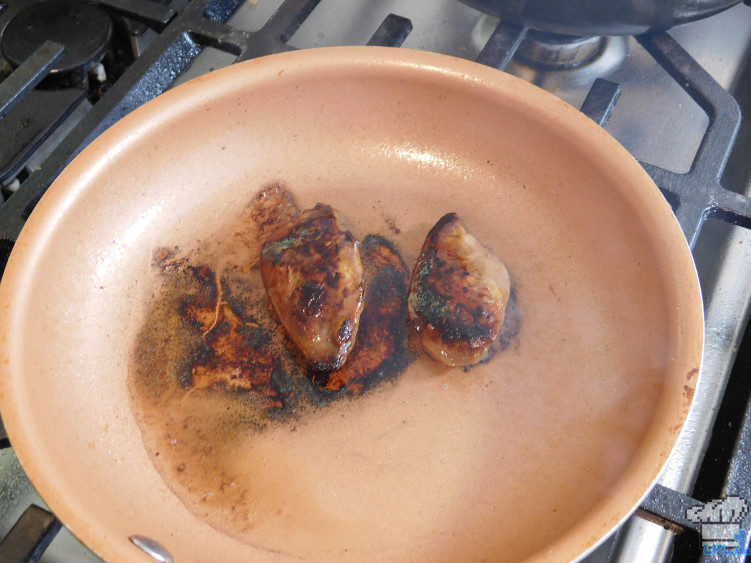
5) Test the internal temperature with a thermometer to ensure the breast is cooked to at least 125°F before removing it from the heat and letting it rest for five minutes before cutting into it. Slice the breast meat and arrange the slices on top of the udon to get that pixel perfect look. Enjoy!
Hey! Thanks for reading all the the way to the end! You’re awesome :D! If you haven’t already and are looking for more nerdy food stuff, consider following me on Twitter, Facebook, tumblr and Instagram. I post a lot of work in progress pictures for the blog as well as stuff from my Twitch streams. If that sounds like something you’d be into, please check out those links above! Anyway, take care everyone and I’ll see you next time with an all-new recipe!
I also wanted to add that recently launched a Patreon page where fans like you can help support me directly! There are some pretty cool rewards in it for you as well so you’ll definitely want to check it out :].
Thanks to everyone who has supported me so far!
Chets Y., Charlotte G., Tyler S., Derek R., Dan S., Victoria , Kurt P., Brian F., Archy Dan, The Gluttonous Geek, Josh M., and Katharina.
– Bryan
